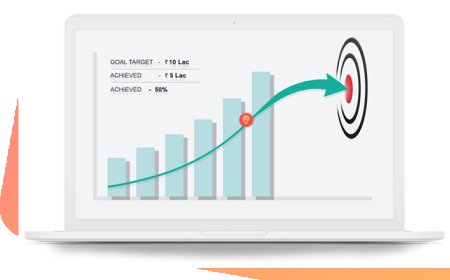Top Loan Management System for Efficient Lending Operations
A loan management system (LMS) automates and manages the entire loan lifecycle, from origination and disbursement to repayment, collection, and closure.

The financial services industry is experiencing a major digital transformation. Whether its traditional banks, NBFCs, or fintech startups, all lending institutions are now focused on speed, accuracy, scalability, and compliance. To meet these objectives, adopting a robust loan management system is no longer optionalits a strategic necessity.
A loan management system (LMS) automates and manages the entire loan lifecycle, from origination and disbursement to repayment, collection, and closure. With rising customer expectations, complex regulatory requirements, and increasing competition, the right LMS can help lenders streamline operations, reduce costs, and deliver a seamless borrower experience.
What is a Loan Management System?
A loan management system is an integrated software platform designed to manage the end-to-end operations of lending. It replaces manual processes and legacy systems with an automated framework that handles customer onboarding, repayment tracking, loan servicing, and delinquency management.
An LMS not only enhances operational efficiency but also ensures compliance with regulatory mandates such as KYC, AML, and data privacy laws. Whether for personal loans, business credit, auto finance, or mortgages, this solution offers unmatched agility and control.
Key Features of a Loan Management System
To effectively support a diverse loan portfolio, an LMS must be rich in features and flexible in functionality. The following components are essential for modern lending:
1. Loan Origination and Disbursement
Supports digital application capture, credit assessment, document management, and real-time fund transfers.
2. Repayment Scheduling
Generates EMI schedules with auto-debit mandates, UPI collection options, and real-time payment tracking.
3. Delinquency and Collection Management
Flags overdue payments, triggers recovery workflows, and integrates with field collections tools.
4. Loan Restructuring and Top-Ups
Allows for flexible rescheduling, interest rate changes, or issuing additional credit on demand.
5. Multi-Product and Multi-Currency Support
Manages various loan types across regions and currencies in a centralized platform.
6. Regulatory Compliance
Maintains audit logs, generates compliance reports, and integrates with KYC/AML services.
7. Reporting and Analytics
Provides dashboards and performance reports on loan health, customer behavior, and risk trends.
Benefits of Implementing a Loan Management System
Adopting a powerful loan management system can transform your lending operations in numerous ways:
-
Operational Efficiency: Automates time-consuming tasks and reduces human error.
-
Faster Loan Servicing: Streamlines the process from origination to closure, reducing turnaround time.
-
Improved Compliance: Automatically ensures adherence to financial regulations.
-
Scalable Infrastructure: Supports high loan volumes and rapid business expansion.
-
Enhanced Customer Experience: Enables borrowers to apply, repay, and interact through digital channels.
In fact, as digital ecosystems expand, modern LMS platforms are even equipped to handle Credit line on UPI Operations, enabling borrowers to draw funds via UPI-linked credit limits. This feature is especially useful for retail lending and MSME financing, where customers prefer real-time access to micro-loans.
Integration Capabilities
A good loan management system is not an isolated toolit integrates seamlessly with other core platforms to deliver unified experiences and reliable data flows. Common integrations include:
-
Core Banking Systems
-
KYC and AML Verification Services
-
Credit Bureaus (CIBIL, Experian, etc.)
-
UPI, Payment Gateways, and e-NACH
-
CRM, ERP, and Accounting Software
-
Digital Signature and Document Management Tools
By leveraging APIs, LMS platforms offer real-time interoperability across systems, enhancing data accuracy, reducing turnaround time, and improving process visibility.
Use Cases Across Lending Segments
A loan management system can be tailored for various business models and loan products:
-
Retail Lending: Personal loans, credit lines, and BNPL.
-
Mortgage and Home Finance: Long-term loan tracking with amortization.
-
Auto Loans and Equipment Finance: Supports dealer integration and asset tracking.
-
Microfinance and Rural Lending: Group loans, recurring payments, and agent modules.
-
SME and Business Lending: Complex underwriting and collateral tracking.
This versatility makes LMS a critical tool for lenders seeking to serve both urban and rural markets, individual borrowers, and corporate clients.
Choosing the Right Loan Management System
With many software providers in the market, choosing the best-fit LMS requires a strategic evaluation. Here are some important factors to consider:
-
Customization: Can the software accommodate your loan products, customer types, and regulatory needs?
-
Ease of Use: Is the user interface simple for staff and intuitive for borrowers?
-
Scalability: Can it support increasing loan volumes and geographical expansion?
-
Security: Does it meet global security standards for financial data?
-
Vendor Support: Is there ongoing training, updates, and customer service?
-
Cost Effectiveness: Does the ROI justify the investment in terms of automation, speed, and compliance?
A scalable and modular LMS will serve your institution not just for today but well into the future.
Trends Shaping the Future of Loan Management
As digital lending continues to evolve, so do loan management technologies. Here are some emerging trends in LMS:
-
AI & Machine Learning: Automating risk scoring, churn prediction, and fraud detection.
-
Blockchain Integration: Securing digital contracts and tamper-proof transaction records.
-
Chatbots & Self-Service Portals: Enhancing customer interaction and reducing support overhead.
-
Real-Time Credit Line Disbursement via UPI: As seen in Credit line on UPI Operations, offering borrowers instant credit through mobile apps.
-
Cloud-First Deployment: Reducing infrastructure costs and improving accessibility.
These advancements ensure that LMS platforms stay relevant in a fast-changing financial landscape.
Conclusion
A smart and scalable loan management system empowers lenders to manage their entire loan lifecycle efficiently. By automating loan servicing tasks, ensuring regulatory compliance, and integrating with a broader financial ecosystem, an LMS helps reduce costs, increase profitability, and improve customer satisfaction.
For financial institutions looking to future-proof their lending operations, investing in a modern LMS is a critical step toward digital maturity. As credit products diversify and customer preferences evolve, having a reliable loan management backbone will be the difference between falling behind and leading the market.


































